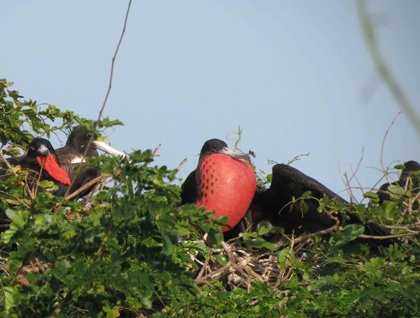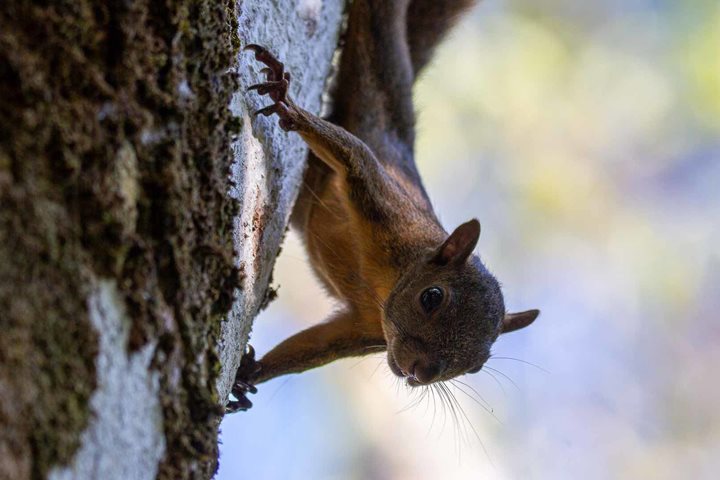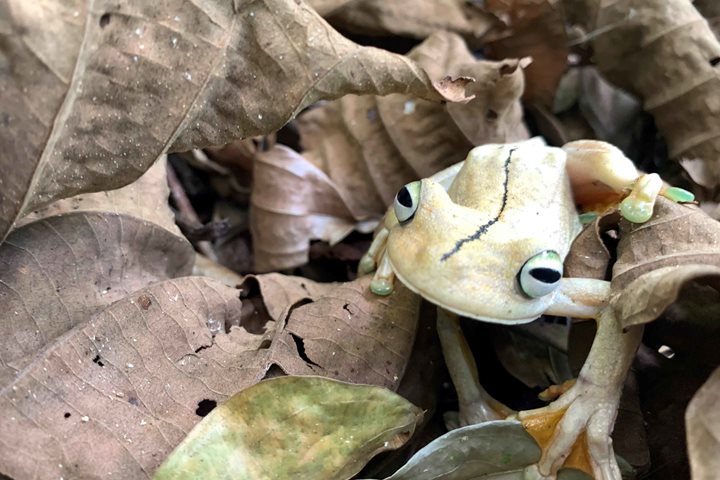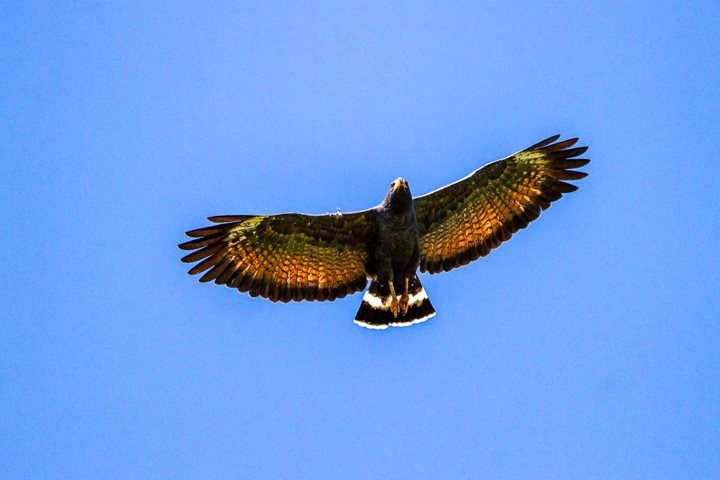This morning, we woke up in a seabird-lover’s paradise. We could see the sky covered by soaring seabirds. Magnificent frigatebirds were flying around their nesting area, brown pelicans were coming back with food and brown boobies were trying to escape from the “pirates of air,” as some people like to call the frigatebirds.
We had the opportunity to take Zodiac cruises from National Geographic Sea Lion. During the cruises, we saw many birds nesting and others with their young in the nest. In the air, some male frigatebirds showed us their spectacular red gular pouches, which they display during the mating season.
After everyone was back from Bona Island, we navigated 60 nautical miles to Iguana Island. This wildlife refuge sits amidst a coral formation that hosts 13 of the 20 species of corals found in the eastern Pacific. It was established in 1980, in association with the Council for the International Protection of Birds (CIPA-Panama). After the last El Niño much of the coral died; however, more than 200 fish species and a wide variety of marine life can be found in the surrounding waters, including sea turtles, dolphins, whales and sharks.
Around 3 p.m. we heard the anchor being dropped. We had arrived at our destination. We grabbed our gear and went ashore to the white sand beach of Iguana Island. Some of us signed up for snorkeling, exploring the coral reef. Others took a walk on one of the trails in the wildlife refuge, searching for birds and iguanas. With our eyes and cameras we took pictures of the birds and animals on the island.
It was a great afternoon, but eventually we had to return back aboard National Geographic Sea Lion. A long trip of 130 nautical miles had to be covered in order to reach our next destination, Coiba Island National Park.







